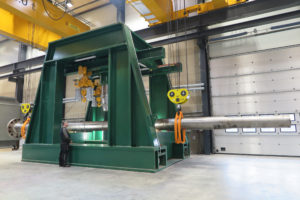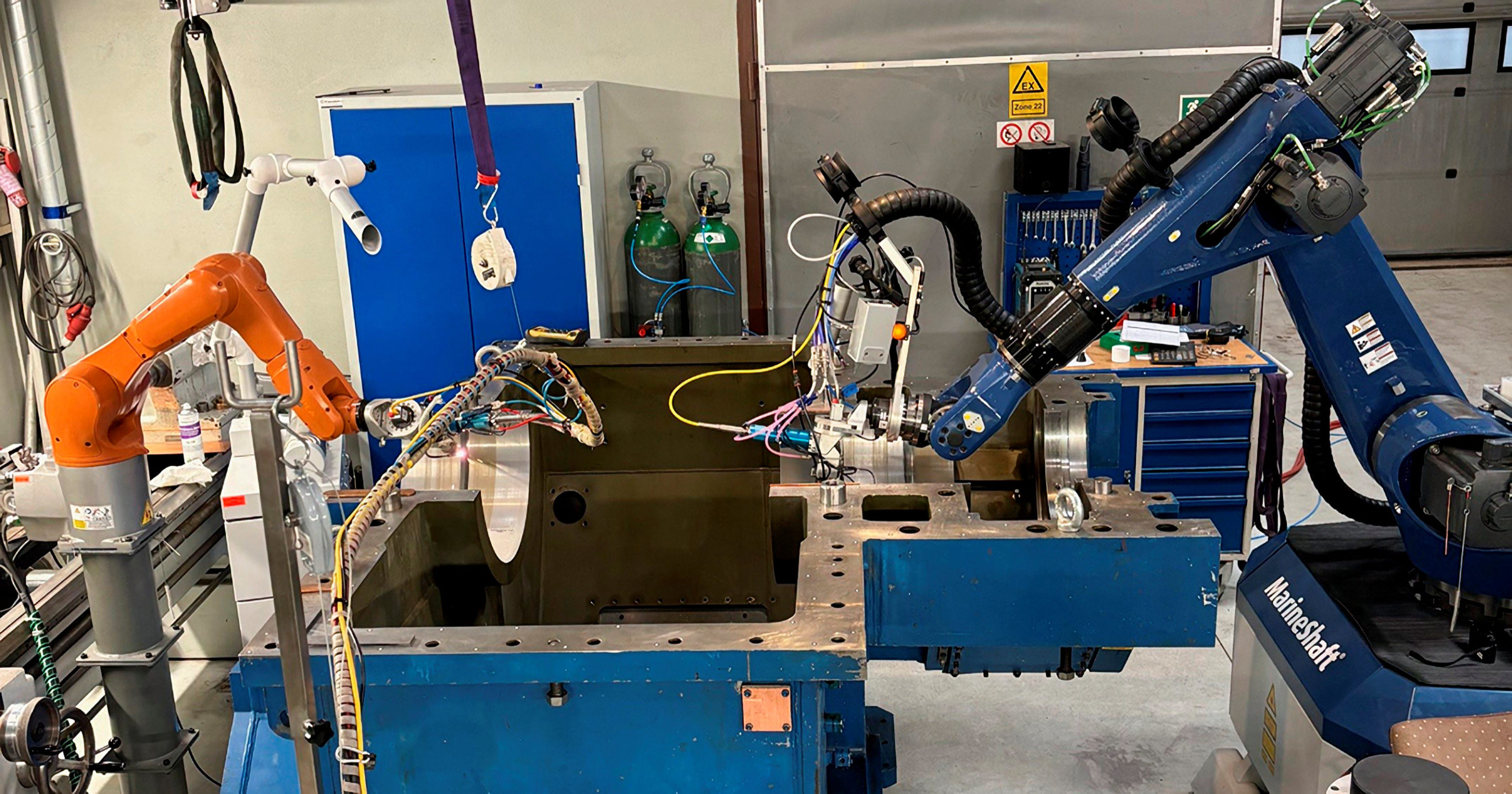Long-term investment strategy provides significant returns at MarineShaft
The Denmark-based repair company MarineShaft specialises in repairing and manufacturing propeller equipment and rudder arrangements. It is a privately-owned company that was founded in 2004 by Knud Andersen and Anders Jensen, who are still managing the company. This year, MarineShaft is celebrating its 20th anniversary, and 2023 was its busiest and most successful year to date, explains Lisa Hjermitslev, CCO at MarineShaft.
Lisa Hjermitslev, CCO at MarineShaft.
Q. Who are your main customers?
A. MarineShaft’s customers include shipyards, ship management companies, shipping companies, and more. Most orders come from abroad, and this is mainly due to MarineShaft’s unique niche in repairing bent propeller shafts and rudder stocks through cold straightening with full class approval.
Q. What sort of growth has MarineShaft seen and what has driven this?
A. Over the years, there have been massive expansions of machinery and workshop areas.
The investments in recent years have been particularly prompted by one clear trend: ships are growing larger and larger, and so are their rudders, propellers, and shafts. If one’s livelihood depends on repairing such components, adaptation is necessary.
Among major expenditure has been a doubling of the area in one of the company’s three workshops. An expansion of 1,400 square metres to approximately 3,000 square metres was completed in 2021, necessary to accommodate an enormous, newly purchased lathe, enabling MarineShaft to turn shafts up to 27m long.
Simultaneously, crane capacity was doubled to 200 tons, and MarineShaft has installed a new custom-built hydraulic press with 8,000 tons pressure capacity, capable of straightening shafts up to 1.5m in diameter.
We haven’t even seen shafts that big yet, but we want to be able to assist even the largest vessels going forward, so we are preparing ourselves.

The new custom-built hydraulic press
Q. What makes MarineShaft different?
A. Few others in the world can offer the expertise that MarineShaft possesses in terms of employees and specialised machinery. I believe we now probably have the largest capacity in the world for this type of repair.
However, capacity alone is not enough. Repair time is also one of the company’s strong and primary parameters. Often it’s urgent tasks – when a rudder breaks or a shaft becomes misaligned, the shipowner is interested in getting the ship back to sea as soon as possible – so things need to move quickly.
Q. What about investment in new technology?
A. We believe in new technology and have continuously invested in new equipment. MarineShaft has been using laser cladding repair technology for the past seven years. We have recently invested in a second larger robotic laser cladding plant, with more equipment on its way.
Q. Why is that?
A. With laser cladding, we can repair damage on vital parts that previously were impossible to repair by regular welding techniques, or not allowed by the classification societies. The Number One advantage of laser cladding is the lower heat input in the material, and from day one, it was our goal to achieve full class approval. Laser cladding has become indispensable for the company.

Laser cladding has become indispensable for the company
MarineShaft has class approvals to use laser cladding on:
- Stainless steel
- Carbon steel
- Bronze
- Cast iron
Another advantage is the shorter repair time, as post-weld heat treatment after laser cladding can be omitted, reducing the delivery time by several days.
It is partly delivery time that has also been behind one of the latest investments. Our newly-acquired 3D scanning equipment enables MarineShaft’s employees to scan and precisely measure dimensions – for example, in propeller blades, cones, rudder stocks, and much more – with a hand-held 3D laser scanner.
This allows us to offer this service wherever a ship is located. We come out, perform a scan of a rudder cone for example, and send the data back home so our workshop personnel can machine the rudder stock to fit precisely. This saves our customer a lot of time. We recently took it out on its first job in China, where we saw very good results. It is still in the startup phase, but it is something we expect a lot from.
MarineShaft has also recently purchased another piece of equipment to provide its customers with the best and fastest repair services. The laser cleaner will considerably speed up the cleaning process. As well as reducing the time, it was also essential that it offered a more environmentally-friendly cleaning method. It requires no use of strong chemicals to remove complex surface coatings and rust etc.
In recent years, MarineShaft has also increased its workforce and has hired new personnel in the workshop, service engineers for on-site repair jobs, and administrative personnel. In total, there are over 85 employees.
Q. How much of your work is workshop-based and how such is on site?
A. The demand for on-site repair services is growing. MarineShaft has a team of service engineers travelling worldwide for all kinds of on-site repair, or tasks needing inspection or supervision. Often a job involves both in-house and on-site work.
Due to this growing demand, MarineShaft has invested in and developed plenty of mobile machinery in recent years. This is an ongoing process to ensure a comprehensive portfolio of equipment for on-site repair services, but also to maintain a solid workforce of technicians with know-how and experience.
Q. What additional work has MarineShaft been carrying out?
A. Whilst MarineShaft is known for specialising in the repair of damaged propeller and rudder equipment, we recently used our modern technology, such as laser cladding and 3D scanning, to urgently repair a gearbox housing.
We received the gearbox at our facilities in Hirtshals, Denmark. After cleaning and disassembling the gearbox housing, 3D scanning equipment was used to scan the housing connecting flanges to check for flatness. One advantage of 3D scanning is the accuracy and detail of the data it provides.
The 3D scanning showed deflection, with both bearing areas found to be oval due to bearing failure. The solution was to rebuild the bearing areas by laser cladding using Inconel 625. MarineShaft has class approval to weld on various types of materials.
As it was an emergency, to speed up the laser cladding process, we teamed our laser cladding equipment so that the two oversized bearings in the gearbox could be welded up twice as fast.
After laser cladding, the surfaces were machined to the original size. Finally, the connecting flanges were 3D-scanned again to verify that the flatness was still within tolerances.
The gearbox was returned to the customer, and the vessel was back in operation with minimal downtime.
Short delivery time combined with know-how and unique repair techniques are the trademarks of MarineShaft. We are committed to offering our clients a complete package of repair solutions, and based on our history, we continue to maintain high hopes and confidence in the future.

MarineShaft recently used laser cladding to urgently repair a gearbox housing



